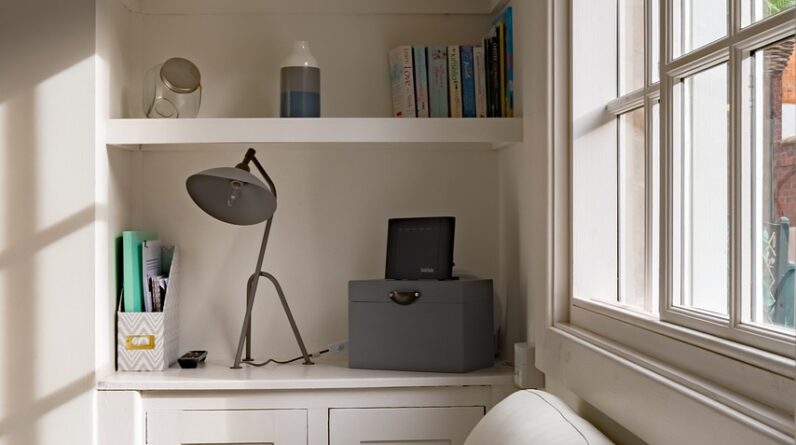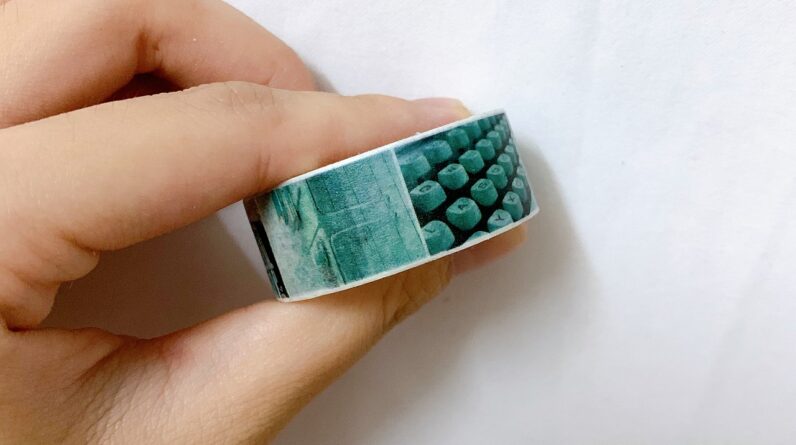
Welcome, friends! Let’s dive into the delightful and gratifying world of homemade candles. In our article, “How to Make Your Own Candles at Home,” we share step-by-step instructions, helpful tips, and creative ideas to ignite our passion for crafting. Together, we’ll explore the essential tools and materials, choose the perfect scents and colors, and master the art of candle-making. So, join us as we transform simple ingredients into cozy, beautiful candles that will warm our homes and hearts.
Have you ever thought about how wonderful it would be to fill your home with the warm, inviting glow of candles that you made yourself? Making your own candles not only allows you to customize the scent and appearance but also provides an excellent opportunity to get creative.
Benefits of Making Your Own Candles
Creating our own candles comes with a myriad of benefits. Not only do we get the satisfaction and pride of a DIY project, but we also gain control over the ingredients, ensuring our candles are free from harsh chemicals commonly found in store-bought products. Plus, it can be more economical in the long run!
Personalization
One of the primary advantages is the ability to personalize the candles to our liking. Whether we want a specific scent or a unique color to complement our home décor, the possibilities are endless.
Cost-Effective
While the initial investment in materials might seem steep, making candles at home becomes more cost-effective over time. Supplies for multiple batches can often be purchased in bulk, reducing the cost per candle.
Health Benefits
Homemade candles can be made from natural ingredients like soy or beeswax, which are healthier options compared to paraffin wax candles. We can also select natural scents, avoiding synthetic fragrances that might cause allergies or health issues.
Creative Outlet
Candle making offers a fantastic creative outlet. From choosing the type of wax and wicks to experimenting with various molds and scents, it’s a fun hobby that can be enjoyed alone or with friends and family.
Materials Needed for Candle Making
Before we dive into the candle-making process, let’s gather the necessary materials. This preparation makes the process smoother and more enjoyable.
| Material | Purpose |
|---|---|
| Wax | The foundation of our candles (e.g., soy wax, beeswax, or paraffin wax). |
| Wick | Essential for burning our candle; size and material can affect how the candle burns. |
| Fragrance Oils | To add scent; essential oils like lavender or citrus are popular choices. |
| Dye (optional) | For coloring our candles if desired. |
| Containers | For holding the melted wax; can range from glass jars to metal tins. |
| Double Boiler | For melting the wax safely; we can use a dedicated double boiler or create one using two pots. |
| Thermometer | To monitor wax temperature and ensure optimal pouring conditions. |
| Stirring Utensil | For mixing in fragrances and dyes once the wax is melted. |
| Wick Centering Device | Helps keep the wick centered while the wax sets; can be as simple as clothespins or pencils. |
| Adhesive (optional) | To secure the wick at the bottom of the container. |

Step-by-Step Guide to Making Candles
Let’s dive into the step-by-step process of crafting our own candles. Preparation is key, so make sure we have all our materials on hand before we begin.
Step 1: Prepare Our Workspace
It’s essential to set up a dedicated workspace, free from drafts and distractions. Cover surfaces with newspaper or old towels to catch any spills. Keep our tools and materials within arm’s reach for efficiency.
Step 2: Measure the Wax
The amount of wax needed depends on the size and number of candles we’re planning to make. As a general guideline, measure approximately double the volume of the container we’re using, as melted wax reduces in volume.
Step 3: Melt the Wax
Using a double boiler, slowly melt the measured wax. If we don’t have a double boiler, we can create one using a heat-safe bowl placed over a pot of simmering water. Stir the wax occasionally to ensure it melts evenly.
Step 4: Monitor the Temperature
Use a thermometer to keep an eye on the wax temperature. This is crucial, especially if adding fragrance oils, as they typically need to be added at a specific temperature (around 185°F or 85°C) for optimal scent throw.
Step 5: Add Color (Optional)
If we want to add color to our candles, now is the time to do it. Candle dyes come in various forms, such as liquid, chips, or blocks. Stir thoroughly to ensure the color is evenly distributed.
Step 6: Add Fragrance
Next, add the fragrance oil. The typical ratio is about 1 ounce of fragrance per pound of wax, but this can be adjusted according to personal preference. Make sure to stir well to distribute the scent evenly throughout the wax.
Step 7: Prepare the Container and Wick
Place the wick in the center of the container. If using an adhesive, secure the wick to the bottom of the container. Use a wick-centering device to keep the wick upright and centered.
Step 8: Pour the Wax
Carefully pour the melted wax into the prepared container. Leave a little space at the top to avoid overflow. Pouring slowly helps to minimize air bubbles.
Step 9: Cool and Set
Allow the candle to cool and set undisturbed for at least 24 hours. This helps the wax to solidify evenly. Any slight imperfections on the surface can be fixed by remelting a small amount of wax and pouring it over the top.
Step 10: Trim the Wick
Once the candle has fully set, trim the wick to about ¼ inch. This helps to ensure a clean and even burn.
Common Candle-Making Troubleshooting
Sometimes, things don’t go as planned, but don’t worry! Here are some common issues and how to resolve them.
| Issue | Possible Solution |
|---|---|
| Wick isn’t staying centered | Use a wick-centering tool like clothespins or pencils to keep the wick in place. |
| Candle surface cracks | Pour at a lower temperature and cool the candle more slowly. |
| Uneven tops | Reheat and pour a thin layer of wax on top to even out the surface. |
| Weak scent throw | Ensure we are adding fragrance oil at the right temperature and using enough oil. |

Types of Wax
Understanding the different types of wax can help us choose the best one for our candles. Each type has its unique properties and benefits.
| Type of Wax | Properties and Benefits |
|---|---|
| Soy Wax | A natural and renewable resource, soy wax burns cleaner and longer than paraffin. It also holds scent well. |
| Beeswax | Known for its natural, subtle honey scent, beeswax burns slowly and is nearly dripless. Eco-friendly too! |
| Paraffin Wax | Commonly used in commercial candles, it’s versatile and affordable. However, it’s a petroleum by-product. |
| Gel Wax | A transparent wax that can be used to create unique, decorative candles. It’s great for embedding objects. |
| Palm Wax | Provides a beautiful crystalline effect when cooled. It’s a sustainable alternative to paraffin. |
Choosing the Right Wick
The wick we choose can significantly impact how our candle burns. Consider factors such as the type of wax, container diameter, and the desired burn time.
Wick Types
| Wick Type | Benefits and Uses |
|---|---|
| Cotton Wicks | Commonly used, versatile, and eco-friendly. |
| Wooden Wicks | Offer a unique crackling sound when burning and are excellent for creating ambiance. |
| CD Wicks | Flat braided wicks that work well with soy wax and provide a consistent burn. |
| Zinc Core Wicks | Stay upright during the burning process, ideal for containers with larger diameters. |
Wick Sizing
Choosing the right wick size is crucial to avoid issues like tunneling (where only the center melts) or excessive smoking. A general guideline is to match the wick size to the container’s diameter.
| Container Diameter | Wick Size (Cotton Wick) |
|---|---|
| Up to 2 inches | Small (e.g., 2-4 mm thickness) |
| 2 to 3 inches | Medium (e.g., 4-6 mm thickness) |
| 3 to 4 inches | Large (e.g., 6-8 mm thickness) |
| Over 4 inches | Extra Large (multiple wicks may be needed) |

Adding Fragrance and Color
Adding fragrance and color to our candles can make them even more enjoyable. Here’s how to do it right.
Fragrance Oils
Fragrance oils are specially formulated for candle making and come in countless scents. Essential oils can also be used for a more natural option.
Tips for Adding Fragrance
- Measure Carefully: Typically, use 1 ounce of fragrance oil per pound of wax.
- Right Temperature: Add fragrance oil at around 185°F (85°C) to ensure it binds well with the wax and produces a strong scent throw.
- Mix Well: Stir the fragrance oil thoroughly into the melted wax for even distribution.
Coloring Our Candles
Adding color to our candles is optional but can enhance their visual appeal. Candle dyes are specially formulated for use in wax and come in liquid, chip, or block form.
Tips for Coloring
- Start Small: Begin with a small amount of dye, as it’s easier to add more than to correct an overly colored batch.
- Ensure Compatibility: Make sure the dye is suitable for the type of wax we’re using.
- Stir Thoroughly: Mix the dye into the melted wax completely to avoid streaks and achieve an even color.
Troubleshooting Common Issues
Even with careful preparation, we might encounter some hiccups along the way. Here’s how to troubleshoot common candle-making issues.
Tunneling
Tunneling occurs when a candle burns down the center, leaving wax around the edges. This can result from using a wick that’s too small.
Solution:
- Use a larger wick or multiple wicks for larger containers.
- Ensure the wick is centered and straight.
Surface Cracks
Surface cracks can appear if the candle cools too quickly.
Solution:
- Pour the wax at a lower temperature.
- Allow the candle to cool in a warm environment, avoiding drafts.
Frosting
Frosting appears as white crystals or spots on the candle surface, common in soy wax.
Solution:
- Warm the container before pouring the wax.
- Use higher-quality wax or additives designed to minimize frosting.
Weak Scent Throw
A weak scent throw can result from improper fragrance oil additions or incorrect temperatures.
Solution:
- Add fragrance oil at the right temperature (around 185°F or 85°C).
- Ensure we’re using the appropriate amount of fragrance oil (about 1 ounce per pound of wax).
Safety Tips
Safety is paramount when working with hot wax and open flames. Here are some essential safety tips to keep in mind.
Handling Hot Wax
- Use a Thermometer: Always monitor the temperature of the melting wax to prevent overheating.
- No Water Near Hot Wax: Water can cause wax to splatter and may lead to burns.
- Proper Ventilation: Work in a well-ventilated area to avoid inhaling fumes.
Wick Safety
- Trim the Wick: Always keep the wick trimmed to about ¼ inch to prevent excessive smoking and soot.
- Extinguish Safely: Use a snuffer or dip the wick into the melted wax to extinguish the flame safely.
General Precautions
- Never Leave Unattended: Never leave melting wax or a burning candle unattended.
- Fire Safety: Keep a fire extinguisher or baking soda nearby in case of an emergency.
- Protect Surfaces: Use heat-resistant containers and surfaces to avoid damage.
Creative Candle Making Ideas
Once we’ve mastered the basics, there are plenty of creative ideas to experiment with. Here are some fun projects to try.
Layered Candles
Create beautiful layered candles by pouring wax in different colors in stages. Allow each layer to set before adding the next.
Embedded Objects
Use gel wax to embed objects like seashells, flowers, or small toys to create visually striking candles.
Scent Combinations
Experiment with blending different fragrance oils to create unique scent combinations. For example, mix lavender and vanilla for a calming aroma.
Molded Candles
Use silicone molds in various shapes to create fun and unique candles. From flowers to festive shapes, the possibilities are endless.
Conclusion
Making our own candles at home can be a fulfilling and enjoyable hobby. Not only can we customize them to our taste, but they make excellent gifts and add a personal touch to our home décor. With the right materials, some patience, and a bit of creativity, we can craft candles that bring warmth, light, and lovely aromas into our everyday lives. So, let’s gather our materials and start creating something beautiful today!







